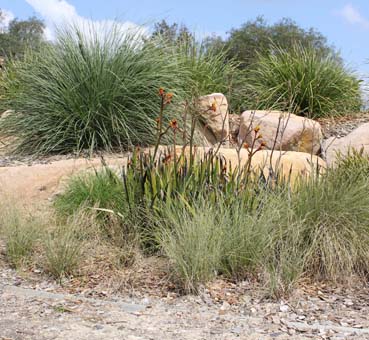Beware of using Lomandra confertifolia in mass planting
Unless certain rules are followed
By Todd Layt
Lomandra confertifolia is a smaller slow growing weaker Lomandra compared to the more robust longifolia, fluviatilis, or hystrix types. Lomandra confertifolia types have been used on many sites, but as they are slow to establish, they often die due to lack of water in establishment, or are out competed by weeds. If Lomandra confertifolia types are used, the smallest size to use is a 140mm pot, but due to the slowness of establishment a minimum size of 175mm would be better. Confertifolias need a longer maintenance schedule than say Lomandra longifolia types like Tanika or Nyalla.
The other problem in using Lomandra confertifolia types in the landscape is that they discolour much worse than longifolia or fluviatilis types in frosts. They also struggle in the dry due to their less vigorous root system. In nature they are generally found in a slightly shaded area. The best place to use Lomandra confertifolia types is in gardens, where they can be maintained, and weeds can be removed. Used in mass plantings, they will be almost always overtaken by weeds.
Some of the new more blue types look pretty, but they die quite easily when the times get tough. Good garden plants for sure, but avoid them for mass planting. Part of the reason why they do not perform as well as the more vigorous Lomandra species in sunny mass planted areas, can be gleamed from the botanic text books. All the Lomandra confertifolia species described grow in dry sclerophyll forest with some shade, except for one type which grows in rocky sandstone type soils. This is probably the reason why most fail in humid type climates, as well as dry climates where it is full sun and heavy soil types.
|

|


